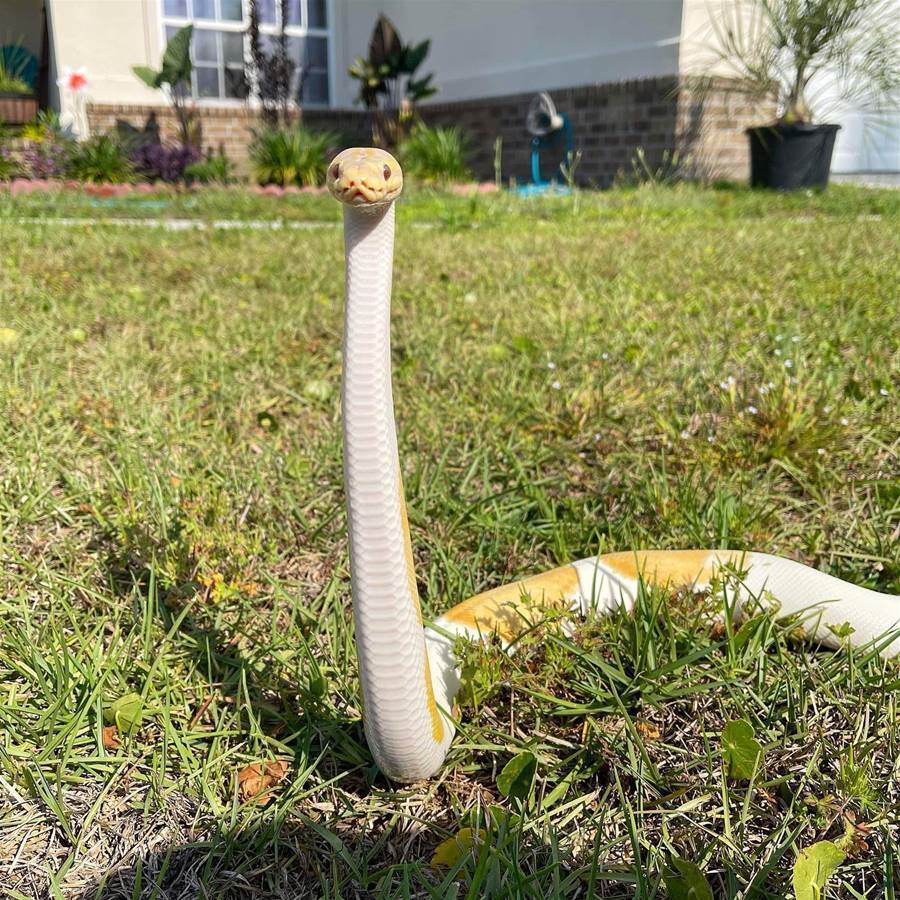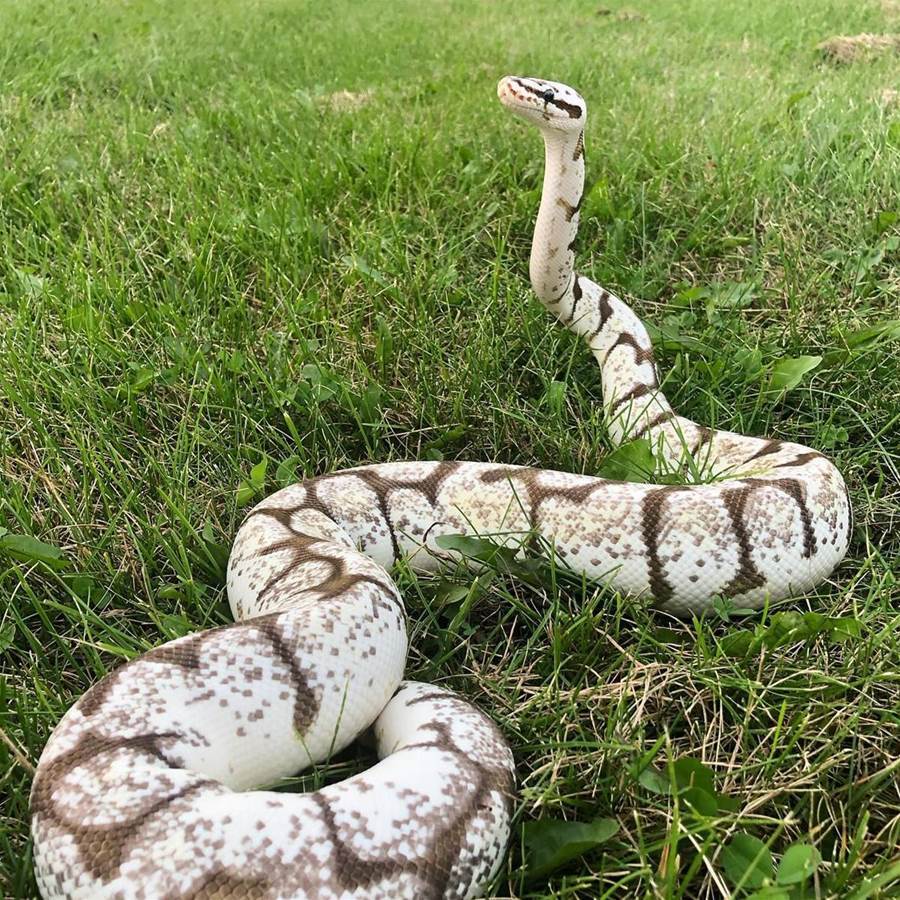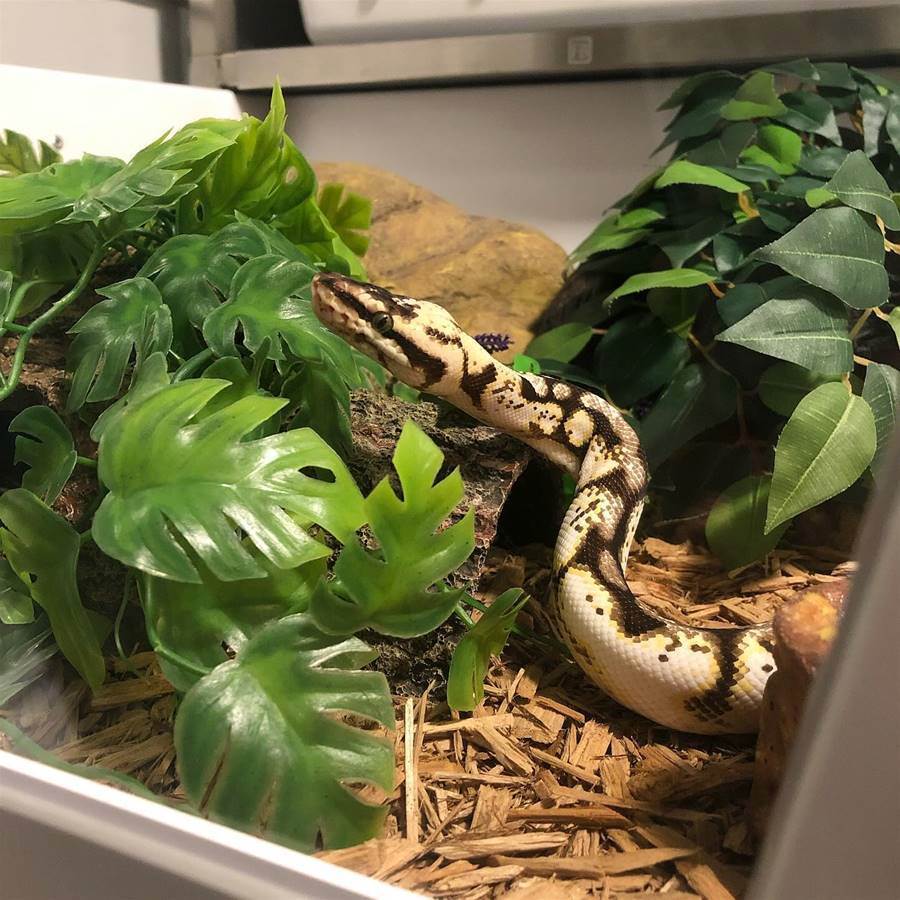

Keeping a pet snake isn’t just cool—it’s a journey filled with learning, love, and sometimes heartbreak. As a reptile keeper, you grow to understand your scaly friend’s unique needs and moods. But proper care isn’t just about admiration; it’s about consistency, environment, and responsibility. Here’s a list of the top care tips and common pitfalls to avoid, backed by real-life snake owners and their companions.

Not all snakes are equal when it comes to temperament and care level.
Green vine snakes, like the one giving judgy stares in the first image, are stunning—but not ideal for beginners due to their sensitivity and specific needs.
Ball pythons and corn snakes are much better starter choices thanks to their calm nature and easy care.
Tip: Do your research before bringing home a snake. Choose one that matches your handling confidence and enclosure space.

Lady Liquorice thrives in lush, bright settings—just like in the flower field or summer grass.
Snakes are environmentally reactive animals. Providing plants, hides, and temperature gradients keeps them healthy and reduces stress. Avoid sterile setups with no cover or variation in temperature.
Tip: Use thermometers and hygrometers in multiple spots to monitor habitat conditions. Add hides on both the warm and cool sides.

Popsicle’s sunny Georgia welcome is a reminder: snakes are cold-blooded and depend on their environment to regulate body temp. Ball pythons and other common species need warm side temps around 88-92°F and humidity between 50–60%, depending on species.
Mistake to avoid: Inconsistent temps or drafts can cause respiratory infections.
Use a thermostat-controlled heat mat or ceramic heater, not heat rocks.

Sir Sprinkles’ story is a tough one. As heartbreaking as it is, part of keeping reptiles is recognizing when quality of life is declining. Failure to thrive, long-term anorexia, or organ failure are signs a humane decision may be necessary.
Tip: Stay connected with a reptile-savvy exotic vet. Sometimes the most loving thing you can do is to let them go peacefully.

That “judgy” look from a vine snake? That’s real. Snakes are great at non-verbal signals—raised heads, defensive postures, hiding too much, or staying too exposed can all mean something’s off.
Tip: Learn your snake’s normal behavior. Sudden changes often point to husbandry issues—don’t ignore them.
Got a Sassy Snake or a Touching Story? Share It Below!

We’d love to hear your favorite tip, your best reptile moment, or even the lessons you've learned the hard way. Drop a comment
and help other snake lovers grow as keepers—because these cold-blooded buddies deserve warmhearted care.

















